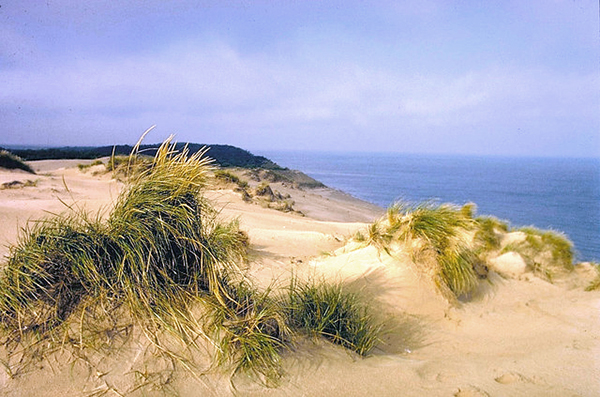 Indiana Dunes National Park. Credit: National Park Service, M. Woodbridge William
Indiana Dunes National Park. Credit: National Park Service, M. Woodbridge William
There is a new trend taking place in the National Park Service of renaming some protected areas that are designated as a "Monument" to the more prestigious title of "National Park."
This may seem like a minor case of semantics.
But the economic implications are major.
Two parks have recently received the "national park" designation.
That would be Indiana Dunes National Lakeshore which was changed to Indiana Dunes National Park and became our 61st national park.
The other is Gateway Arch National Park, where the famous arch in St. Louis was renamed from Jefferson National Expansion Memorial. (Which by the way, is now our smallest national park covering 192 acres. The largest? Wrangell-St. Elias in Alaska with more than 8 million acres).
Becoming a national park increases economic value
As you can imagine, renaming an area as a "National Park" carries considerable weight.
For one, an upgraded park joins an elite group of just 61 national parks. A group that contains magnificent landscapes ranging from the Grand Canyon to Glacier National Park.
When people travel, and record numbers of them are now visiting national parks, it's easy to focus on this elite group first.
Subsequently, attracting more visitors results in more spending at that location and the surrounding community - a chamber of commerce's dream.
In a study conducted by Headwaters Economics in Montana, making Bandelier National Monument in New Mexico an official national park would bring an estimated $2.1 million to $2.5 million in new spending, as many as 36 new jobs and perhaps more than $1 million in labor income.
All that extra money has a multiplier effect in a community as it flows through restaurants, hotels, gas stations and other businesses.
Just think of the publicity. When Indiana Dunes National Park was created, the change generated major headlines in the media all across the country. That alone resulted in millions of dollars of free exposure.
And for any park aficionado or devoted hiker, curiosity about this new park is probably a reason for them to add it to their list of future places to visit.
Parks that went from monuments to national parks
Want to hear about other rebranding success stories?
Well, Arches, Death Valley, Saguaro and Great Sand Dunes all started as national monuments.
Go to Arches National Park near Moab, UT, on almost any day and you will see this has become one of the most popular destinations in America. About 1.6 million park enthusiasts hiked there in 2018.
In fact, in the Intermountain West, the economic research firm reported that visits to national parks grew 55%, while visits to national monuments increased a mere 2%.
The reason is obvious. People can rattle off the names of many of our national parks. National monuments? Not so much.
One major benefit of adding more national parks might be to dilute the visitors to each park. Right now, our most popular parks - Arches, Zion, Grand Canyon, Yosemite, Yellowstone, to name a few, are practically being overrun by visitors.
In 2019, more than 318,211,800 recreational visitors entered our national parks. (By the way, there were 120,690 visitors in 1904, the first year they kept records).
By adding more parks, perhaps these areas will start generating attention and diverting travelers away from visiting the Top 20 National Parks.
Most people will agree. You can never have enough parks, especially large national parks.
Maybe it's time we expanded that list.


